III. PRELIMINARY SCOPING MEMO
A. Discussion, Need For Hearings, Scope And Order To Show Cause
As we have stated in recent investigation orders reviewing utility-related fires in the San Diego area, it is essential to protect Californians from future utility-related fire hazards. For that reason, the Commission expects to hold hearings and accept evidence about the matters and violations alleged in the CPSD Report. If those violations are proven in this proceeding, the Commission expects to consider and take remedial action.
To address these matters, the Commission intends to direct Respondents to reply to specific questions and to hold public hearings on this matter. The Commission also invites interested parties to actively participate in this proceeding as it involves important safety and other policy matters that will benefit from the expertise, participation, and evidence of other parties.
This proceeding shall seek to:
(1) Determine whether any of the named Respondents violated any provisions of the Public Utilities Code, general orders, other rules, or requirements, regarding their facilities linked to the Malibu fire;
(2) Determine the remedy or remedies for any proven violation;
The reports of CPSD and the LA Fire Department provide us with a prima facie showing that violations have occurred and that the Malibu fire stems from the violations. Respondents should produce evidence to the contrary in support of their positions and conclusions. In view of the specific information in CPSD's report we will expect that if the Respondents disagree with CPSD that they present evidence ample to support their specific positions and conclusions.
Each Respondent is directed to appear and provide evidence to establish that it has not committed the violations alleged in CPSD's report, and that the October 21, 2007 fire did not occur as a result of any violation. Further, the Commission directs each Respondent to file a written report with the Commission, served on all parties, by March 2, 2009, which fully responds to the following request for information for the period from January 1, 1990 through October 20, 2007:
A. Provide the dates of each inspection conducted on any of the three poles and the equipment attached directly to the poles and provide all written reports of those inspections. If no contemporary written reports exist, provide a written description of the inspections conducted and findings, and the basis on which (e.g. name of witness) the inspections are presently evaluated.
B. Provide the dates and descriptions of maintenance conducted and additional equipment installed, and modifications to any one of the three poles or to the equipment supported by the poles.
C. Provide all calculations, studies, and analyses done during the period from January 1, 1990 to October 20, 2007, to ensure that the three poles and their loads were properly configured and, maintained in compliance with the Commission GO 95 and with otherwise good practice.
D. Provide a summary of Respondent's actions taken to demonstrate that the three poles and their loads met the minimum safety factors required by GO 95, and otherwise met the specific requirements of Rules 12.2, 31.1, 31.2, 43.2, 44.1, and 44.2 of GO 95.
E. Provide a summary of Respondent's contentions and evidence in support for such contention, in agreement or disagreement with CPSD that Respondent violated GO 95 as to the specific provisions and requirements listed in "D" above.
F. Provide a summary of Respondent's contentions and evidence in support for such contention, as to whether the Malibu fire was caused by the poles' breakage. If a violation of the GO 95 is admitted, state whether the fire would have been avoided absent the violation, and provide support for this position.
G. Describe why all of Respondent's actions and practices, related to the matters alleged in CPSD's report, were lawful, reasonable and prudent.
H. Provide all documents that support or relate to the responses and information provided in the report.
I. Provide the names (and titles if employee or agent) of all witnesses to the responses and information in the report. Provide the name of each such witness with respect to specified portions of the report.
J. Provide a stipulation of agreement to any and all portions of the CPSD report that Respondent does not dispute.
B. Schedule
As stated above, the Commission notifies Respondents that the Commission will set hearings to review the issues raised by this matter. The Commission intends to set a prehearing conference to consider and adopt a hearing schedule and schedule other matters for this proceeding.
C. Categorization
This proceeding is categorized as adjudicatory. Ex parte communications are prohibited. The determination as to category is appealable under Rule 7.6 of the Commission's Rules of Practice and Procedure.
Therefore, IT IS ORDERED that:
1. An investigation is instituted on the Commission's own motion to determine whether Respondents violated any provision of the Public Utilities Code, general orders, other rules, or requirements by overloading three Malibu utility poles and thus by not complying with the loading and other requirements set forth in General Order 95, and by otherwise failing to utilize safe practices required by General Order 95 or other applicable law.
2. Southern California Edison Company, Verizon Wireless LLC, Sprint Communications Company L.P., NextG Networks of California and AT&T Communications of California, Inc., are Respondents to this investigation.
3. Each Respondent is directed to show at hearings why the Commission should not find it in violation of provisions of the Public Utilities Code, general orders, other rules, or requirements identified in this Order, and/or engaging in unreasonable and/or imprudent practices related to these matters, and why the Commission should not impose a penalty. If any violation is found each Respondent found responsible for the violation is directed to show why penalties and/or any other form of relief should not be applied. Respondents, and each of them, are also directed to file a report on March 2, 2009 providing the information required and specified in this order.
4. Respondents are put on notice that fines may be imposed in this matter pursuant to Public Utilities Code §§ 2107, 2108.
5. Respondents are put on notice that the Commission may order the implementation of operational and policy measures designed to prevent future hazards pursuant to Public Utilities Code § 761.
6. Pursuant to Rule 7.1(c) of the Commission's Rules of Practice and Procedure, this proceeding is categorized as adjudicatory, deemed to require hearings, and this Order includes a preliminary scoping memo. This Order, only as to category, is appealable under Rule 7.6.
7. A prehearing conference shall be convened before an Administrative Law Judge (ALJ) for the purpose of establishing a schedule in this matter, including the date, time, and location of an evidentiary hearing, and for good cause shown the ALJ and/or Assigned Commissioner may extend the deadline of March 2, 2009 for any particular responses required.
8. The attached Report prepared by the Commission's Consumer Protection and Safety Division, supported by Declaration, is hereby entered into the record for this proceeding.
9. The Executive Director shall cause a copy of this Order to be served by certified mail on each Respondent at:
Thomas Braun, Senior Attorney Southern California Edison Company 2244 Walnut Grove, Suite 354 Rosemead, CA 91770 |
Anthony Rodriquez, Regulatory & Contract Specialist NextG Networks of California 2216 O'Toole Avenue San Jose, CA 95131 |
William Kuchler, Senior Analyst Verizon Wireless, LLC 180 Washington Valley Road Beidminster, NJ 07921 |
Greta Banks, Mananger AT&T Communications of California, Inc. 525 Market Street, 19th Floor San Francisco, CA 94105 |
Stephen Kukta, Director State Regulatory Sprint Communications Company, LP |
This order is effective today.
Dated January 29, 2009 at San Francisco, California.
MICHAEL R. PEEVEY
President
DIAN M. GRUENEICH
JOHN A. BOHN
RACHELLE B. CHONG
TIMOTHY A. SIMON
Commissioners
APPENDIX
to Order Instituting Investigation
(Includes G.O. provisions which CPSD contends Respondents may have violated or which may be relevant to violations - this Appendix is not inclusive of all violations or relevance to violations)
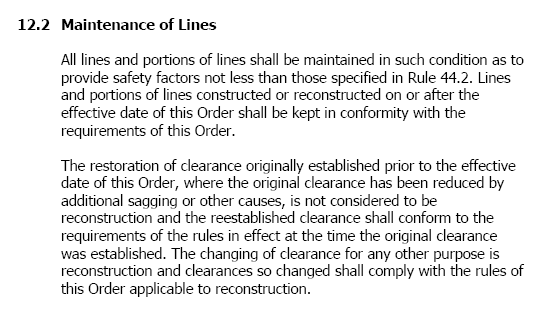
*********************************************************************************************

*********************************************************************************************
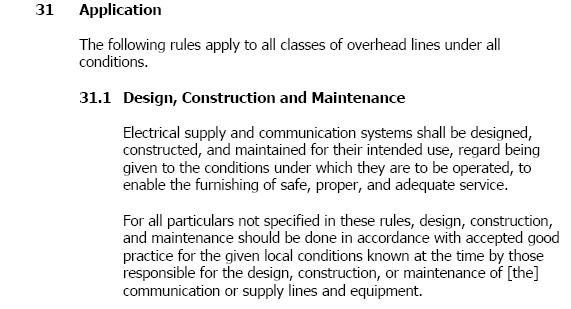


*********************************************************************************************
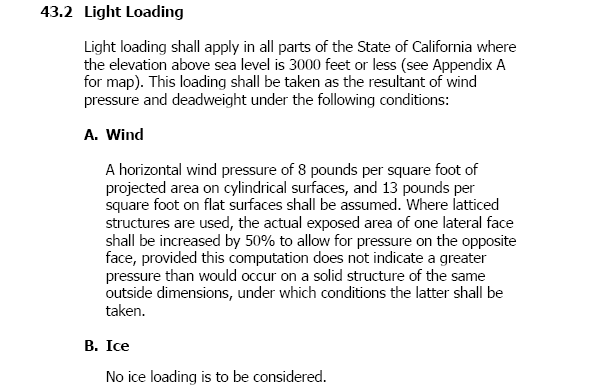

*********************************************************************************************
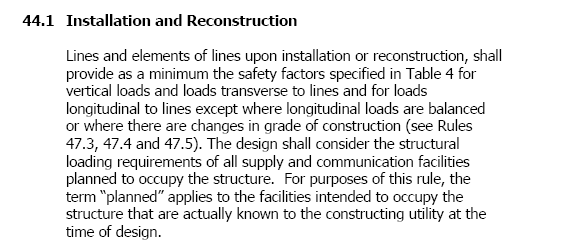
(Table 4 and footnotes to Table 4 are omitted here)
*********************************************************************************************
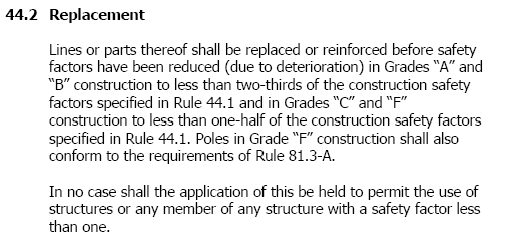
*********************************************************************************************
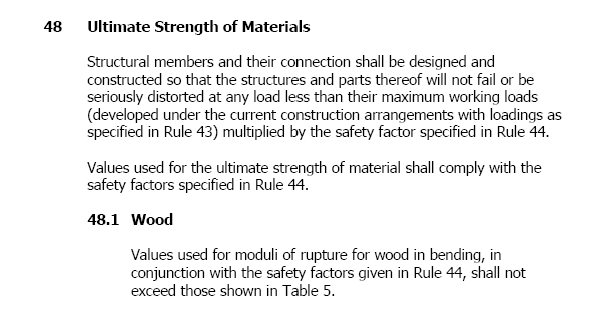

(Footnotes for Table 5 are omitted here)
*********************************************************************************************


*********************************************************************************************

ATTACHMENT
CALIFORNIA PUBLIC UTILITIES COMMISSION
Consumer Protection and Safety Division
Utilities Safety and Reliability Branch
Incident Investigation Report
Report Date: 10/21/2008
Investigator: Kan Wai Tong, CPSD investigator and Utilities Engineer
Incident Number: E 20071021-01
Utility: Southern California Edison (SCE), Verizon Wireless, Sprint Nextel, and NextG Networks
Date and Time of the Incident: 10/21/2007, 0450 hours
Location of the Incident: Malibu Canyon Road 2.8 miles north of Pacific Coast Highway
Malibu, CA
Summary of Incident:
On October 21, 2007, at approximately 0450 hours, three wooden poles owned and maintained by public utilities, and bearing live electrical wires and other utility facilities, broke and came to the ground resulting in a vegetation fire. The Los Angeles County fire department report prepared after the fire states that "the fire spread rapidly due to steep terrain and high winds, destroying fourteen (14) structures, damaging approximately nineteen (19) other structures, thirty-six (36) vehicles and burned approximately 3,836 acres."
The poles supported overhead facilities that belong to the Southern California Edison Company (SCE), Verizon Wireless, Sprint Nextel, and NextG Networks. CPSD's investigation found that the vegetation fire started after the overhead facilities installed on the poles fell to the ground. SCE, Verizon Wireless, Sprint Nextel and NextG Networks violated General Order (GO) 95, including but not limited to Rules 12.2, 31.1, 31.2, 43.2, 44.1, and 44.2 for failing to safely and properly maintain, inspect, replace, and reinforce their poles and other facilities, and for failing to prevent their safety factors to fall below the minimum requirements specified in the Commission's general orders.
Fatality / Injury: CPSD is aware of no injuries or fatalities.
Estimated Property Damage: $14,528,300
Utility Facilities Involved: Crater-Reclaim/Tapa, 66 kV Circuit
Witnesses:
Name Title Phone
1 Frederick McCollum SCE - Senior Investigator (626) 302-6867
2 Patrick Spence SCE - Manager (626) 302-6980
3 Cliff Houser LA County Fire Investigator (626) 433-1011
4 Robert Ramos SCE - Manager (626) 302-3136
5 Sandy Clark LA County Fire Department (626) 433-1011
- Custodian of Records
6 Ross Johnson AT&T Regulatory (415) 778-1430
7 Jim Brown Cable Engineering Service (818) 898-2352
8 Kristin Jacobson Sprint Nextel - Attorney (415) 278-5314
9 Malcolm Brown Verizon Wireless - Sr. Engineer (949) 286-8772
Evidence:
Source Description
1 Fredrick McColllum Letter dated December 20, 2007 (in response to my November 8, 2007 data request)
2 Kan Wai Tong Photos taken at the scene and
SCE's warehouse
3 Patrick Spence SCE's initial report
4 Fredrick McCollum SCE's final report
5 Fredrick McCollum Letter dated January 16, 2008 (in response to my
6 Fredrick McCollum Letter dated February 4, 2008 (in response to my January 25, 2008 data request)
7 Fredrick McCollum Letter dated April 1, 2008 (in response to my March 18, 2008 data request)
8 Fredrick McCollum Letter dated July 17, 2008 (in response to my July 17, 2008 data request)
9 Fredrick McCollum Letter dated August 11, 2008 (in response to my August 1 data request)
10 Sandy Clark Accidental Brush Report 07-260
11 Ross Johnson Email dated September 10, 2008 (in response to my August 21, 2008 data request)
12 Jim Brown Email dated October 8, 2008 (in response to my August 19, 2008 data request)
13 Kristin Jacobson Email dated October 2, 2008 (in response to my August 19, 2008 data request)
14 Sharon James Email dated October 17, 2008 (in response to my August 19, 2008 data request)
Investigator Observations and Findings:
On October 21, 2007, at approximately 0450 hours, SCE reported to the Utilities Safety and Reliability Branch (USRB) that three wooden poles (SCE states in writing that poles are jointly owned by SCE, Verizon Wireless, Sprint Nextel and NextG Networks) broke and came to the ground in high wind, and that the electrified components that fell resulted in a 3,836-acre vegetation fire and damage or destruction to 33 structures, primarily homes. The fire department report stated "The fire spread rapidly due to steep terrain and high winds, destroying fourteen (14) structures, damaging approximately nineteen (19) other structures, thirty-six (36) vehicles and burned approximately 3,836 acres."
On November 8, 2007, (the access road to the origin of the fire was closed for some time after the fire occurred) at approximately 0900 hours, I met Robert Ramos of SCE and I visually examined and took photos of the damaged facilities at SCE's Westminster base. I found that three wooden poles, 1169252E (50-ft height), 1169253E (50-ft height) and 2279212E (35-ft height), had been collected by SCE crew from the scene. By then SCE had cut the poles cut into sections apparently to facilitate removal from the area.
The poles showed fire damage at the soil-air interfaces. A 2,600-pound concrete block was found by the SCE repair crew in the middle of the road after the incident. According to SCE, the block was an anchor support for guys wires installed on pole 2279212E to provide lateral tension of the circuits involved. At approximately 1230 hours, Mr. Ramos and I conducted a site investigation. I found that two SCE circuits, 16-kV and 66-kV, had been supported by the three failed poles along Malibu Canyon Road. I noted that the failed poles had been replaced with new poles after the fire. The three new poles were set adjacent to each other (in a row) along Malibu Canyon Road.
In a letter dated December 20, 2007, Fredrick McCollum, SCE Senior Investigator, stated that SCE had designed the failed poles to withstand 8 pounds per square foot wind pressure, as required by GO 95, Rule 43.2. The same letter states that the last detailed inspection by SCE was conducted on September 25, 2006 and that SCE last patrolled the circuits on February 12, 2007.1
No unusual conditions were noted either in the detailed inspection or patrol records. SCE's circuit logs showed that the circuits involved relayed (interrupted the service) at the time of the incident.
Mr. McCollum's letter dated April 1, 2008, indicated that SCE last intrusively tested poles 1169252E and 1169253E on May 23, 2007 and pole 2279212E on March 19, 2007.2 No unusual conditions were noted in SCE's records.
Mr. McCollum's letter dated July 17, 2008, states that the failed poles were jointly owned by SCE, AT&T, Verizon Wireless, Sprint Nextel and NextG Networks, Inc. Mr. McCollum also asserts that "each party shall comply with all applicable federal, state, and local laws, rules and regulations, any revisions or supplements thereto...". Because the poles were jointly owned by SCE, AT&T, Verizon Wireless, Sprint Nextel, and NextG Networks, Inc., and because the applicable general orders apply explicitly to "all electrical supply and communication lines which come within the jurisdiction of this Commission", each and all of the utilities identified above were responsible for compliance with the Commission's general orders. SCE (McCollum) contends in its letter that SCE was not required to approve the additional load added by other parties. The meaning of SCE's contention is unclear given the joint responsibility that was borne by each and all these utilities to comply with the Commission's general orders.
From August 14 to October 20, 2008, I made several attempts to obtain copies of the wind loading calculations from the communication companies of the communications
facilities that had been installed on the failed poles. On September 10, 2008, Ross Johnson stated that AT&T did not have any facilities installed on the poles. On October 8, 2008, Jim Brown sent me the wind loading calculations for Verizon Wireless.
On October 10, 2008, I received the written Accident Brush Report 07-260 from Sandy Clark of the Los Angeles (LA) County Fire Department (attached). The report indicates that due to the severe Santa Ana winds at the time of the incident, the poles broke and caused the overhead energized conductors to contact each other resulting in arcing and a vegetation fire below the conductors.
The LA County Fire Department found no physical impact damage to the base of the pole or any tire tracks in the dirt surrounding the imbedded portion of the pole, or other reasons to suspect vandalism or arson. LA County fire investigator's (Cliff Houser) report concludes : "Based on findings, evidence observed and statements made during this investigation, it is my opinion, this fire was accidental in nature, caused when two (2) Edison power poles, including a support pole, snapped and fell over, allowing excess slack in the electrical lines. This slack diminished the normal clearance of the wires allowing energized electrical lines to touch one another, causing arcing sparks to fall into the combustible brush below the wires. A severe Santa Ana wind condition at the time was a major factor in the spread of this fire."
LA County Fire Department did not record the wind speed at the time of the incident. However, Cliff Houser indicated to me that the firefighters who responded to the incident told him that based on their experience, the wind speed was approximately 50 miles per hour at the location and time of the incident.
On October 17, 2008, Sharon James (NextG) indicated to me in her email response that NextG Networks facilities on the poles were installed at the end of 2004, and neither NextG Network nor its contractor could locate the wind loading calculation for the facilities. It is thus not currently possible to ascertain which company installed the facilities that first overloaded the facility and first caused non-compliance with the General Order.
On October 20, 2008, Kristin Jacobson stated to me by telephone that Sprint facilities were installed on the poles in 1997, and that Sprint could not find any wind loading calculation for its facilities. Ms. Jacobson could not confirm whether such calculation had been performed prior to installation of its facilities. Without further information from Sprint, or NextG, it may not be possible to determine whether the poles were already overloaded by Sprint in 1997 or by NextG in 2004.
Ms. Jacobson also stated to me that Sprint does not believe that GO 95 or any other rule or decision requires utilities to retain such calculations. However, Ms. Jacobson stated that she believes that the wind effect was considered in order to pass the structural analysis required by the Joint Pole Association.3 The purpose of the Joint Pole
Committee is to keep accurate records of ownership for each pole and keep on file a master record of each jointly-owned pole. The principal function is to calculate the established value of each transaction, involving the sale or purchase of joint pole equity interests or maintenance of those interests. The Joint Pole Committee office prepares monthly Bills of Sale to the members to enable them to make monetary settlement of their joint enterprises.
Table 4 of Rule 44.1, requires wooden poles in grade A construction to have a construction "safety factor" of 4 at the time of construction. Rule 44 explains that "the safety factors specified in these rules are the minimum allowable ratios of ultimate strengths of materials to the maximum working stresses..." In other words the safety factors describe the expected maximum stress under specific working conditions (weight, wind speed), as compared to the strength of the materials under stress.
GO 95, Rule 44.2, states that lines or parts thereof shall be replaced or reinforced before safety factors have been reduced (due to deterioration) in Grades "A" and "B" construction to less than two-thirds of the construction safety factors specified in Rule 44.1.
GO 95, Rule 43.2, requires poles to be designed to withstand the wind pressure of 8 pounds per square foot of projected area. This factor of safety also known as Safety Factor (SF), is used to provide a design margin over the theoretical design capacity to allow for uncertainty in the design process. The uncertainty could be any one of a number of the components of the design process including calculations, material strengths, duty, and manufacture quality. The value of the safety factor is related to the lack of confidence in the design process. The simplest interpretation of the Factor of Safety for a pole is
SF = Strength of pole / Load on pole
If a pole needs to withstand a wind load of 8 pounds per square foot of a projected area and a SF of 8/3 (2/3 times 4) is selected then it is designed with strength to withstand minimum wind speed of 92.4-mph.
The poles that broke and came down to the ground should have been designed, loaded, and maintained to withstand a minimum wind speed of 92.4-mph (See Appendix A for a step by step calculation).
According to information provided by National Oceanic and Atmospheric Administration (NOAA) Cooperative Institute, the closest weather station (CEEC1 - Cheeseboro), located at 9-miles north of the fire, recorded that the wind was gusting at approximately 49-mph at the time of the incident.
Preliminary Statement of Pertinent General Order, Public Utilities Code Requirements, and/or Federal Requirements:
General Order GO Rule
1. GO 95 Rule 12.2
2. GO 95 Rule 31.1
3. GO 95 Rule 31.2
4. GO95 Rule 43.2
5. GO95 Rule 44.1
6. GO95 Rule 44.2
Conclusion:
Based on all the evidence made available to me, it is my opinion that the poles did not meet the requirements of GO 95, Rules 43.2 and 44.2, for ensuring that the failed poles maintained a safety factor of no less than two-thirds of the construction safety factor of 4. If the poles had been maintained, inspected, and constructed in compliance with the applicable Commission general orders, the poles clearly would have withstood the winds that they were subjected to on October 21, 2007. Therefore, SCE, Verizon Wireless, Sprint, and NextG Networks are in violation of GO 95, Rules 12.2, 31.1, 31.2, 43.2, 44.1, and 44.2 for failing to properly maintain and inspect their poles and for failing to prevent their safety factor to fall below the minimum Commission requirements.
Further, violations of the general order were the direct cause of the October 21, 2007 fire.
Appendix A
Based on wind pressure of 8 pounds per square foot of projected area and safety factor of 8/3 (2/3 x 4), the following is a calculation of the minimum wind speed that the poles should withstand:
Eq. 1: SFmin = P1 / P2
Parameters:
Vmin = Minimum Design Wind Speed Requirement for the poles (mph)
SFmin = Minimum Safety Factor for the poles = 4 * 2/3 (GO 95, Rules 44.1 & 44.2)
P1 = Ultimate Strength of the poles (psf) = 0.0025 Vmin^2 (eq. 14-66, Standard Handbook for Electrical Engineers, 11th Ed)
P2 = Maximum Assumed Wind Pressure (psf) = 8 psf (GO 95, Rule 43.2)
Re-arranging the Eq.1:
Vmin = (SFmin * P2 / 0.0025)^0.5
Substituting the parameters into the equation:
Answer: Vmin = 92.4-mph
The formulas above are used and defined in the engineers' reference book. The parameters were extracted from GO 95, Rules 43.2, 44.1 and 44.2, and are based on standard engineering references, concepts, and calculations.
NOTE
County of Los Angeles Fire Dept. report is not attached at this time. It has not yet been publicly released with the permission of the L.A. Fire Dept. It will be distributed separately to the Commissioners and their staff.

1 Definition of Patrol in General Order 165 is: "Patrol" shall be defined as a simple visual inspection, of applicable utility equipment and structures that are designed to identify obvious structural problems and hazards. Patrols may be carried out in the course of other company business.
2 Definition of Intrusive inspection in General Order 165 is: "Intrusive" inspection, is defined as one involving movement of soil taking samples for analysis, and/or using more sophisticated diagnostic tools beyond visual inspections or instrument readings.
3 Source: http://scjpc.net/


